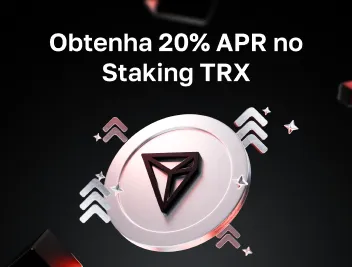
Razão Ethereum-para-Bitcoin Cai para os Níveis de 2020: É Hora de Se Preocupar?
O mercado de criptomoedas não é estranho aos altos e baixos, mas recentemente, o desempenho do Ethereum em relação ao Bitcoin tem chamado a atenção. O motivo disso é o fato de que a razão Ethereum-para-Bitcoin (ETH/BTC) caiu para seu ponto mais baixo desde 2020. Isso deixou os investidores se perguntando se o Ethereum está perdendo sua vantagem ou se é apenas um retrocesso temporário.
Ethereum Enfrenta Dificuldades Contra o Bitcoin
Ethereum tem sido, por muito tempo, a segunda maior criptomoeda em termos de capitalização de mercado, mas recentemente tem mostrado sinais de desgaste. Em abril de 2025, a razão ETH/BTC caiu para 0,022, uma queda significativa em relação ao seu pico em 2022. Para colocar isso em perspectiva, o Ethereum perdeu mais de 70% de seu valor em relação ao Bitcoin desde que a razão estava em torno de 0,085 em setembro de 2022. Como resultado, o Ethereum está sendo negociado por cerca de $1.880, uma queda de quase 62% em relação ao seu valor máximo histórico de $4.890 em 2021.
O que está por trás dessa queda acentuada? Vários fatores contribuem para as dificuldades atuais do Ethereum. Um deles é a diminuição do valor total bloqueado (TVL) em plataformas de finanças descentralizadas (DeFi). No início de 2024, o Ethereum detinha mais de 61% do mercado DeFi, mas, em abril de 2025, esse número havia caído para apenas 52,5%. À medida que concorrentes como a Solana ganham espaço, a dominância do Ethereum no espaço dos contratos inteligentes está diminuindo. O crescimento de alternativas está se tornando mais evidente, à medida que projetos e usuários migram para redes mais novas, rápidas e baratas.
Concorrência com Outras Altcoins
A luta do Ethereum não se resume apenas a questões técnicas internas; ele também enfrenta uma concorrência crescente. Alternativas de blockchain Layer-1, como Solana, Binance Smart Chain e Avalanche, estão atraindo usuários com velocidades de transação mais rápidas e taxas mais baixas. Isso tem desgastado a posição antes inabalável do Ethereum no espaço dos contratos inteligentes.
Além disso, a camada principal do Ethereum, apesar de várias atualizações, ainda está processando apenas de 10 a 16 transações por segundo. Enquanto isso, redes como a Solana ostentam mais de 4.000 transações por segundo. Isso torna o Ethereum uma opção mais lenta e cara para os usuários, especialmente aqueles que lidam com transações menores ou buscam oportunidades de negociação rápidas. Para muitos usuários, isso torna alternativas como a Solana mais atraentes, deixando o ecossistema do Ethereum com uma fatia menor do mercado.
Uma Perspectiva Bearish para o Ethereum?
Naturalmente, a tendência bearish para o Ethereum também é resultado das condições mais amplas do mercado. Enquanto o Bitcoin tem se mantido estável, com uma queda de apenas 10% no acumulado do ano, o Ethereum viu uma queda drástica de 46% no mesmo período. O contraste acentuado é especialmente preocupante para os investidores de ETH.
Uma questão chave para o Ethereum é sua crescente dependência dos rollups Layer-2 para escalar sua rede. Rollups como Arbitrum, Optimism e Base têm ganhado força, mas essa mudança está fazendo com que a atividade se desloque para longe da mainnet do Ethereum, puxando tanto usuários quanto taxas de transação para os ecossistemas Layer-2. Como um usuário apontou, enquanto os rollups estão prosperando e arrecadando taxas, a camada base do Ethereum está se tornando cada vez menos ativa, quase como uma cidade fantasma.
A dominância de mercado do Ethereum caiu para abaixo de 8,4%, seu nível mais baixo em mais de quatro anos. Isso é um sinal claro de que os investidores estão procurando alternativas. Para muitos, a perspectiva de o Ethereum recuperar sua antiga glória parece cada vez mais improvável, a menos que consiga resolver suas limitações centrais.
Conclusão
A questão de se é hora de entrar em pânico é difícil de responder. Embora o desempenho do Ethereum levante preocupações, especialmente quando comparado à relativa estabilidade do Bitcoin, a rede continua sendo um grande player. Ela ainda é central para o DeFi e NFTs, mas, a menos que o Ethereum consiga aumentar significativamente sua escalabilidade e usabilidade, pode ficar para trás diante de concorrentes mais rápidos e baratos. Por outro lado, o Bitcoin continua liderando o mercado, com um forte investimento institucional, o que o torna menos vulnerável à concorrência.
Então, os investidores de Ethereum devem se preocupar? Embora o mercado atual tenha seus desafios, o Ethereum ainda é um grande jogador no mundo cripto. Enquanto a rede continuar evoluindo, ela pode se manter relevante. No entanto, é claro que o Ethereum enfrenta forte concorrência e precisará resolver alguns problemas para recuperar seu ímpeto.
Avalie o artigo








comentários
0
Você precisa estar logado para postar um comentário